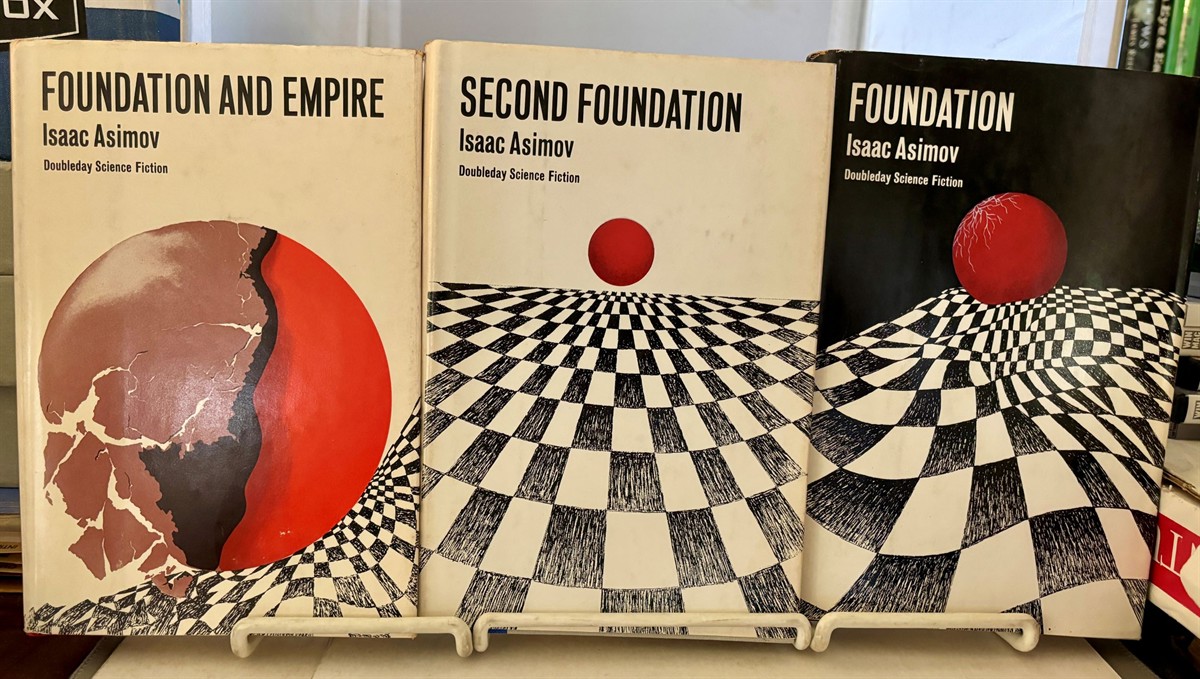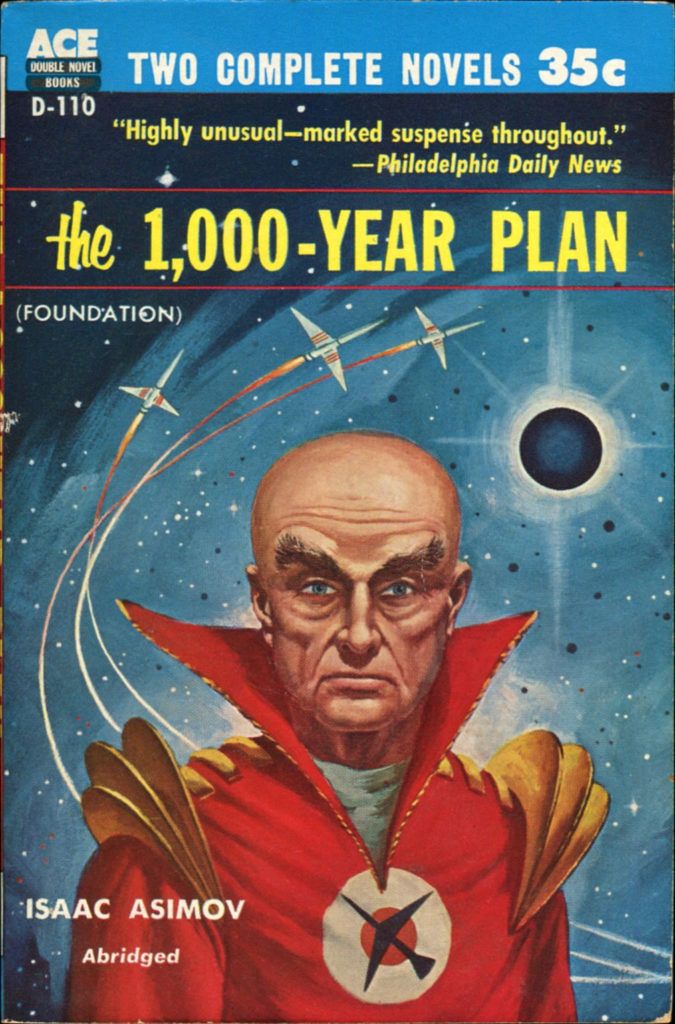The Foundation Book Series: A Deep Dive into Asimov's Epic Saga

Isaac Asimov’s Foundation series stands as a monumental achievement in science fiction, a sprawling saga that spans millennia and explores the rise and fall of galactic empires. Its enduring popularity stems not only from its captivating narrative but also from its insightful exploration of societal trends, the power of prediction, and the enduring human spirit. This article delves into the Foundation series, examining its literary merits, historical context, various adaptations, and lasting cultural impact, touching on key aspects such as the individual books, Asimov’s writing style, and the series’ enduring legacy.
The Books: A Chronological and Thematic Exploration
The Foundation series comprises seven books, although the reading order is a topic of ongoing discussion among fans. Asimov himself suggested a chronological order, which differs from the publication sequence. This approach unveils the intricate tapestry of his vision more effectively.

The series can be broadly divided into three sections: the original trilogy, the prequels, and the sequels. The original trilogy, published in the 1950s, presents the core concept of psychohistory and the establishment of the Foundation.
Original Trilogy:
-
Foundation (1951): This seminal work introduces Hari Seldon, a brilliant mathematician who develops psychohistory, a method for predicting the future of large populations. Seldon foresees the imminent collapse of the Galactic Empire and devises a plan to shorten the ensuing dark ages by establishing two Foundations on opposite sides of the galaxy. The novel follows the initial struggles and triumphs of the First Foundation as it navigates political turmoil and societal upheaval. Asimov masterfully crafts a narrative that balances scientific concepts with compelling characters and thrilling conflicts.
-
Foundation and Empire (1952): This sequel showcases the Foundation’s continued success and its growing influence in the collapsing Galactic Empire. However, a new threat emerges in the form of the Mule, a powerful mutant with unique psychic abilities, who throws Seldon’s predictions into disarray. The Mule’s unpredictable actions force the Foundation to adapt and find new ways to maintain its survival.
-
Second Foundation (1953): This concluding installment of the original trilogy unravels the mystery of the Second Foundation, a secretive organization established by Seldon to safeguard his plan. The search for the Second Foundation drives the plot, leading to revelations about its true nature and its crucial role in shaping galactic history. The climax sees the confrontation between the First and Second Foundations, highlighting the complexities of power and the delicate balance of Seldon’s long-term strategy.
Prequels:
Asimov returned to the Foundation universe in the 1980s, writing two prequels that fill in the gaps in the timeline and offer greater insight into Hari Seldon’s life and motivations.
-
Prelude to Foundation (1988): This prequel provides a detailed account of Hari Seldon’s early life, his development of psychohistory, and his initial struggles to gain acceptance for his revolutionary ideas. The narrative delves into Seldon’s personal life, his relationships, and his motivations, adding depth and complexity to his character.
-
Forward the Foundation (1993): The second prequel explores the events leading up to the beginning of Foundation, demonstrating the challenges Seldon faces in putting his plan into action and the various political and social forces he must contend with. This novel further emphasizes the human element in the grand scheme of psychohistory.
Sequels:
The final two books published during Asimov’s lifetime complete the main narrative arc.
-
Foundation’s Edge (1982): Set several centuries after the original trilogy, this sequel introduces Golan Trevize, a brilliant scientist who embarks on a quest to uncover the secrets of the Second Foundation and the true origin of humanity. The narrative explores themes of exploration, discovery, and the search for Earth, the long-lost homeworld of mankind.
-
Foundation and Earth (1986): This final installment resolves the mystery of Earth, revealing its history and its significance to the Foundation. Trevize’s journey culminates in a confrontation with the Second Foundation, leading to a resolution of long-standing conflicts and an understanding of the intricate dynamics of the entire Foundation universe.
Genres and Classifications
The Foundation series primarily belongs to the science fiction genre, specifically hard science fiction. Its detailed consideration of scientific principles, mathematical models, and technological advancements makes it a prime example of the subgenre. Moreover, it displays elements of political fiction, with its nuanced portrayal of power dynamics, political maneuvering, and the intricacies of governance in a vast galactic empire. It can also be categorized as a space opera, as it features a grand scope, epic conflicts, and interstellar exploration. Finally, with its predictive element at its core, the series can be described as having aspects of utopian and dystopian fiction.
Isaac Asimov: Master of the Genre
Isaac Asimov’s distinctive writing style significantly contributed to the Foundation series’ success. His writing is characterized by clear prose, logical structures, and his ability to integrate complex scientific ideas into the narrative seamlessly. He had a knack for creating believable worlds that are both scientifically plausible and imaginatively rich. His characters, while often driven by rational decision-making, possess complexities that engage the reader. The original trilogy, which might be perceived as short stories, displays Asimov’s talent for concise storytelling and impactful narratives. However, the later books, with their expanded scope, demonstrate his skill in managing extended narratives. These books’ length allows Asimov to introduce more characters and develop more intricate plots, while still managing to keep the central theme of psychohistory firmly in place.

Asimov’s inspirations for the series were multifaceted. While the initial idea arose from free association, as detailed in his autobiography, the overarching themes of empire, decay, and societal change reflect Asimov’s observations of the real world. His writings also reveal his deep understanding of history and his fascination with scientific concepts. This mixture of fictional elements with well-researched information lends realism to his work and enriches the readers’ understanding of the themes.
Asimov’s Other Works
Beyond the Foundation series, Asimov produced a prolific body of work, encompassing other science fiction classics, including the Robot series and the Galactic Empire novels. These series, though initially separate, were eventually integrated into the broader Foundation universe, creating a vast and interconnected future history. He also wrote widely in the mystery genre and even ventured into non-fiction writing, demonstrating his versatility and intellectual curiosity. This vast oeuvre reveals the breadth of Asimov’s creative powers and his intellectual depth.

Reading and Learning: Educational Value and Life Lessons
The Foundation series offers substantial educational value. It presents scientific concepts, such as psychohistory, in an accessible manner, sparking readers’ interest in science and mathematics. It also explores complex historical and sociological themes, encouraging critical thinking about societal trends and the forces shaping civilizations. The series’ consideration of different forms of government, societal structures, and the human condition makes it a thought-provoking work that can stimulate debates about how societies are formed and how they change over time.
The series’ main life lesson is perhaps the importance of planning and foresight, but not in a simplistic or deterministic way. The “Seldon Plan” may seem to reduce human agency to simple calculation, but the narrative constantly reveals the unforeseen and the unpredictable. However, preparation and a willingness to adapt provide a better chance of success. The books highlight the human capacity for resilience, innovation, and collaboration in overcoming adversity. The central idea of psychohistory, although fictional, also shows readers how important it can be to collect and analyze data to understand trends and predict future developments.
The immersive nature of Asimov’s world-building also fosters critical reading skills. Readers learn to analyze the implications of the technological advancements described, the societal structures created, and to consider their own viewpoints in light of the fictional societies developed. Reading and discussing Foundation provides opportunities to analyze and interpret complex ideas, fostering discussion about the human condition and the path of civilizations.
Libraries and Archives: Preserving Asimov’s Legacy
The Foundation series is widely available in both physical and digital libraries. Public libraries frequently feature the books, while digital libraries like Project Gutenberg offer easy access to some versions. Rare collections and archives may hold first editions and original manuscripts, providing invaluable insights into Asimov’s creative process. Preserving Asimov’s work through these various collections ensures that his vision continues to inspire and inform future generations of readers.
Cultural Impact: Adaptations and Literary Influence
The Foundation series has had a profound cultural impact. Its influence on subsequent science fiction writers is undeniable, shaping the subgenre’s landscape through its exploration of psychohistory, its futuristic settings, and its themes of societal change and the rise and fall of civilizations. Its lasting impact lies in its exploration of grand historical narratives, which has inspired many other works of fiction and non-fiction.
The series has been adapted numerous times. The Apple TV+ series is the latest, and perhaps the most ambitious adaptation to date. Other adaptations have explored different aspects of the Foundation universe, demonstrating its broad appeal and its adaptability to various mediums. These adaptations, successes and failures alike, highlight the enduring appeal and cultural significance of the series. Many of the adaptations also illustrate the ongoing discussion among fans of how best to interpret and transmit this intricate narrative.
Awards and Recognition
The Foundation series has garnered significant critical acclaim, including winning the Hugo Award for Best All-Time Series, a testament to its literary merit and its lasting impact on the science fiction genre. The award itself highlights the series’ position as a defining work of science fiction literature.
Communities and Fandom
The enduring popularity of the Foundation series has fostered vibrant fan communities, online forums, and social media groups. These communities serve as spaces for discussions, interpretations, and creative explorations of Asimov’s universe, ensuring the series’ relevance and its engagement with new audiences. These communities are also vital to the ongoing discussions about which is the best order to read the books and how best to interpret the central ideas of psychohistory and the grand narrative of the Foundation.
In conclusion, Isaac Asimov’s Foundation series represents a remarkable achievement in science fiction, leaving an indelible mark on literature and popular culture. Its exploration of complex themes, its captivating narrative, and its enduring appeal continue to resonate with readers and viewers alike. The ongoing discussions and interpretations surrounding its different adaptations, as well as the diverse formats available, further solidify its position as a timeless classic.